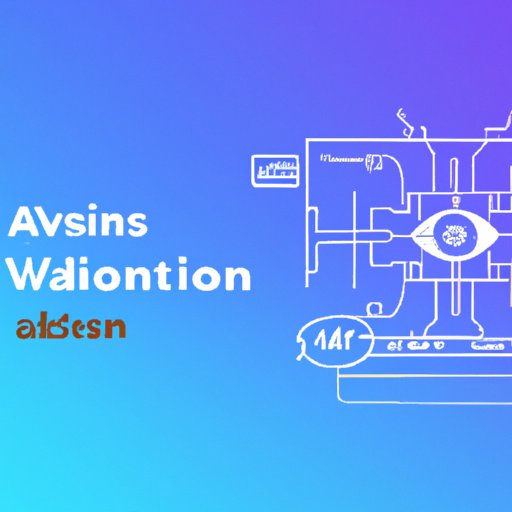Introduction
Vision AI is an artificial intelligence technology that uses computer vision algorithms to identify and process visual information from digital images or videos. It enables computers to recognize and understand objects, people, and scenes in digital media, allowing them to make decisions and automate processes based on visual data. This technology has numerous potential applications, ranging from automating quality assurance processes to enhancing security and optimizing operations.
Exploring Vision AI: What is it and How Does it Work?
At its core, vision AI is an artificial intelligence technology that enables machines to “see” and process visual information from digital images or videos. It is based on a set of algorithms and technologies that enable computers to recognize and understand objects, people, and scenes in digital media. By leveraging these algorithms and technologies, vision AI systems can make decisions and automate processes based on visual data.
Vision AI systems rely on several different algorithms and technologies, such as convolutional neural networks (CNNs), recurrent neural networks (RNNs), and transfer learning. CNNs are used to extract features from images, while RNNs are used to analyze sequences of images over time. Transfer learning, meanwhile, is used to apply knowledge gained from one task to another related task. These algorithms and technologies work together to enable vision AI systems to accurately identify and process visual information.
Examples of common use cases for vision AI include facial recognition, object detection and classification, motion tracking, and scene understanding. Facial recognition systems, for example, are used to identify individuals from digital images or videos. Object detection and classification systems, meanwhile, are used to identify and classify objects in digital images. Motion tracking systems, meanwhile, are used to track movement in digital videos. Finally, scene understanding systems are used to interpret complex scenes in digital images or videos.
A Comprehensive Guide to Vision AI: Benefits, Challenges and Applications
Vision AI is a powerful technology with numerous potential benefits, but it also presents certain challenges and limitations. In this section, we will explore the benefits, challenges, and applications of vision AI.
Benefits of Vision AI
The most significant benefit of vision AI is its ability to automate processes that rely on visual information. By leveraging computer vision algorithms, vision AI systems can quickly and accurately identify and process visual information, allowing them to make decisions and automate processes with minimal human involvement. This can have a major impact on businesses, as it can reduce costs, improve efficiency, and reduce errors.
Vision AI also has the potential to improve safety and security. By leveraging facial recognition systems, for example, businesses can more effectively monitor their premises and detect threats. Additionally, vision AI can be used to enhance surveillance systems and improve response times to incidents.
Challenges of Vision AI
Despite its potential benefits, vision AI presents certain challenges and limitations. One of the most significant challenges is accuracy. While vision AI systems can be highly accurate, they are not perfect and can sometimes produce inaccurate results. Additionally, vision AI systems can be vulnerable to adversarial attacks, which can cause them to produce incorrect results.
Another challenge of vision AI is cost. While the cost of vision AI technology has decreased significantly in recent years, it can still be expensive to develop and deploy a vision AI system. Additionally, vision AI systems require a large amount of data to train, which can be costly and time-consuming to acquire.
Applications of Vision AI
The potential applications of vision AI are vast, ranging from automating quality assurance processes to enhancing security and optimizing operations. Common use cases for vision AI include facial recognition, object detection and classification, motion tracking, and scene understanding. Additionally, vision AI can be used to automate tasks such as inspection, inventory management, and product sorting.
How Vision AI is Transforming Image Recognition Technology
Image recognition technology is a subset of vision AI that focuses on recognizing objects, people, and scenes in digital images. It is used in a variety of applications, such as facial recognition, object detection, and automated image tagging. By leveraging vision AI algorithms and technologies, image recognition technology has been transformed in recent years.
Advantages of Using Vision AI for Image Recognition
Vision AI offers several advantages over traditional image recognition technology. Most notably, vision AI systems can be trained with much larger datasets, allowing them to be more accurate and reliable. Additionally, vision AI algorithms can be adapted to specific use cases, enabling them to be tailored to a business’s specific needs. Finally, vision AI systems can be deployed quickly and cost-effectively, making them ideal for businesses of all sizes.
Examples of Companies Using Vision AI for Image Recognition
Many companies are leveraging vision AI for image recognition, including Google, Amazon, Microsoft, and IBM. Google, for example, has developed a suite of vision AI tools called Cloud Vision, which enables developers to build applications that can recognize objects, people, and scenes in digital images. Amazon, meanwhile, has developed Rekognition, a cloud-based image recognition service. Microsoft, meanwhile, has developed Computer Vision, an image recognition service that can be used to build applications that can recognize faces, objects, and scenes in digital images.

Building Powerful Solutions with Vision AI: Best Practices and Tips
Building a successful vision AI solution requires careful planning and a clear strategy. In this section, we will explore some best practices and tips for building powerful solutions with vision AI.
Designing a Successful Vision AI Solution
The first step in building a successful vision AI solution is to carefully design the system. This involves identifying the problem you are trying to solve and determining the best approach for solving it. Additionally, you should consider which algorithms and technologies are best suited for your use case and define the parameters for success. Once the system is designed, you can begin developing it.
Developing an Effective Vision AI Strategy
Once the system is designed, the next step is to develop an effective vision AI strategy. This involves selecting the best algorithms and technologies for your use case, determining the data requirements, and setting up the infrastructure. Additionally, you should consider how to integrate the system into your existing infrastructure and how to ensure its security.
Leveraging Vision AI to Automate Processes
Finally, once the system is built and deployed, you can leverage vision AI to automate processes. This involves training the system with large datasets, fine-tuning it to improve accuracy, and monitoring its performance. Additionally, you should consider how to scale the system for future needs and how to ensure its security.
Unveiling the Potential of Vision AI: Real-World Use Cases
Vision AI is being used in a variety of real-world applications, ranging from automating quality assurance processes to enhancing security and optimizing operations. In this section, we will explore three real-world use cases for vision AI.
Case Study: Automating Quality Assurance with Vision AI
One of the most common use cases for vision AI is automating quality assurance processes. By leveraging computer vision algorithms, vision AI systems can quickly and accurately detect defects in products, allowing companies to reduce costs and improve efficiency. For example, a manufacturer may use vision AI to inspect products for defects before they are shipped to customers.
Case Study: Enhancing Security with Vision AI
Vision AI can also be used to enhance security by leveraging facial recognition systems. By using facial recognition systems, businesses can more effectively monitor their premises and detect threats. Additionally, vision AI can be used to enhance surveillance systems and improve response times to incidents.
Case Study: Optimizing Operations with Vision AI
Finally, vision AI can be used to optimize operations by automating tedious tasks. For example, a company may use vision AI to automate product sorting and inventory management, allowing them to save time and money. Additionally, vision AI can be used to automate tasks such as inspection, package handling, and logistics.
Conclusion
Vision AI is an artificial intelligence technology that uses computer vision algorithms to identify and process visual information from digital images or videos. It has numerous potential benefits, including the ability to automate processes, improve safety and security, and optimize operations. However, vision AI also presents certain challenges and limitations, such as accuracy and cost. Additionally, vision AI is being used in a variety of real-world applications, ranging from automating quality assurance processes to enhancing security and optimizing operations.
In summary, vision AI is a powerful technology with numerous potential applications. By leveraging its algorithms and technologies, businesses can automate processes, improve safety and security, and optimize operations. With the right strategy and best practices, businesses can unlock the potential of vision AI and build powerful solutions.
(Note: Is this article not meeting your expectations? Do you have knowledge or insights to share? Unlock new opportunities and expand your reach by joining our authors team. Click Registration to join us and share your expertise with our readers.)
